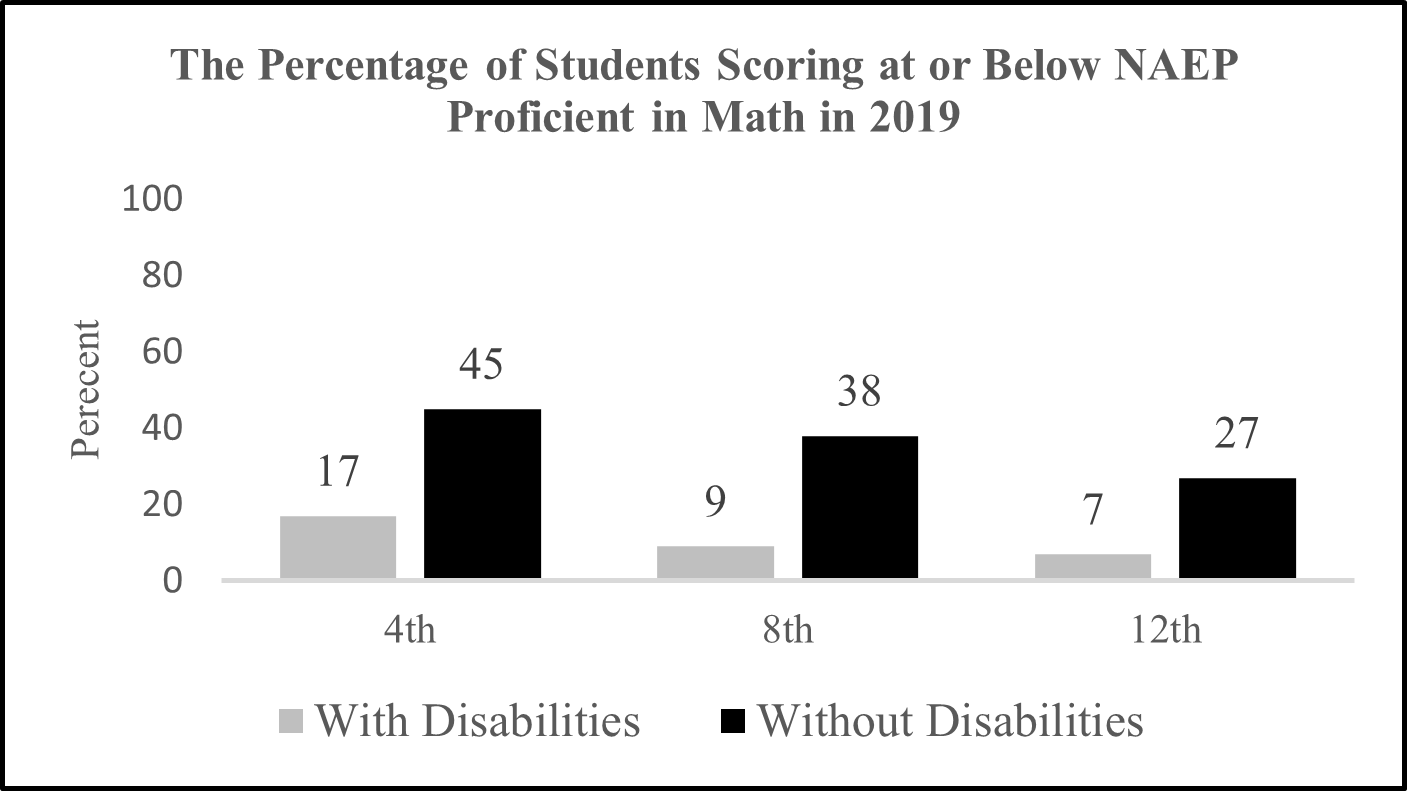Mathematical Word-Problem-Solving Instruction for Upper Elementary and Secondary Students with Mild Disabilities and Students at Risk for Math Failure: A Research Synthesis
Jonté A. Myers, Elizabeth M. Hughes, Bradley S. Witzel, Rubia D. Anderson, and Jennifer Owens
How are students performing on assessments of word problem solving?
Students' ability to think critically and abstractly is essential for their success in post-secondary education and career advancement. K-12 schools have increased their focus on assisting students in building these skills through word problem solving (WPS). However, students’ WPS performance on national assessments remains discouragingly low, especially among students with disabilities.

How to read this chart: The chart shows that the proportion of students with disabilities considered at least proficient in math is consistently lower compared to students without disabilities across all grade levels. It also suggests a large proportion of both groups of students are experiencing math difficulties.
What is needed to improve students word problem performance?
The low WPS performance of students overall, and achievement gaps between students with and without disabilities draws attention to the need to identify evidence-based practices that increase the WPS performance of students with mathematics difficulties (MD), including those with and without an identified disability. Therefore, we conducted a meta-analysis to synthesize the findings of experimental and quasi-experimental design studies that examined mathematics interventions for supporting the WPS of upper elementary and secondary students with MD.
How did we do this study?
We conducted a systematic search and found 35 studies of 36 interventions that measured the WPS performance of upper elementary and secondary students with MD. From these, we extracted 88 estimates of the effectiveness of the 36 interventions. We appraised each study’s quality per Council for Exceptional Children quality standards and coded 15 intervention and design characteristics that potentially influence effect sizes. We estimated the interventions’ overall average effects and examined the influence of the 15 intervention and study characteristics on the magnitude of the effects on WPS performance.
What did we find?
Results of our analysis revealed that interventions seeking to address WPS had large positive effects on WPS performance (g = 0.70). We also found that mean effects varied across several intervention characteristics. For example, effects tended to be larger than average when the interventions:
- occurred in Grades 4 and 5
- covered foundational math content (e.g., fractions)
- were implemented by researchers
None of the design characteristics were related to the size of the effects. We conclude that the mathematics interventions examined effectively increased students’ WPS performance. We note, however, that our findings are limited due to the small sample size and missing data.
Full Article Citation:
Myers, J.A., Hughes, E.M., Witzel, B.S., Anderson, R.D., & Owen, J. (2022). A meta-analysis of mathematical interventions for increasing the word problem-solving performance of upper elementary and secondary students with mathematics difficulties. Journal of Research on Educational Effectiveness. https://doi.org/10.1080/19345747.2022.2080131
